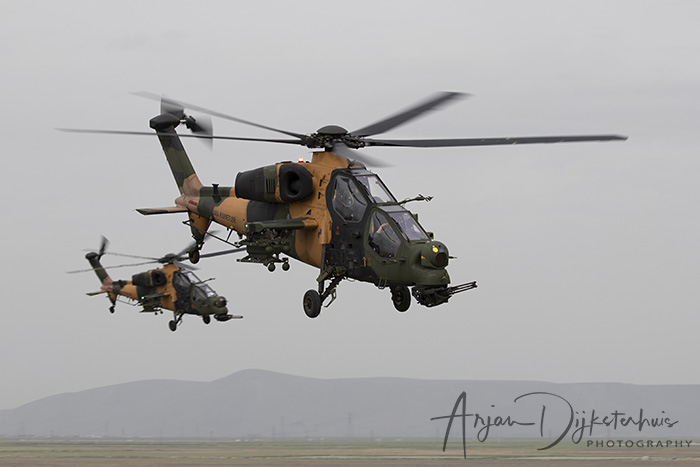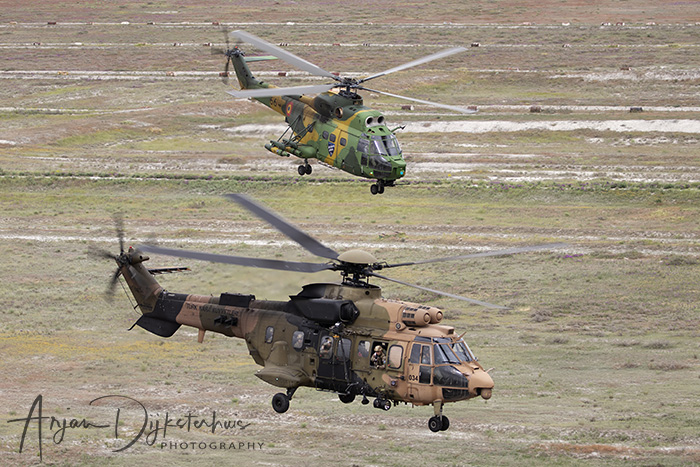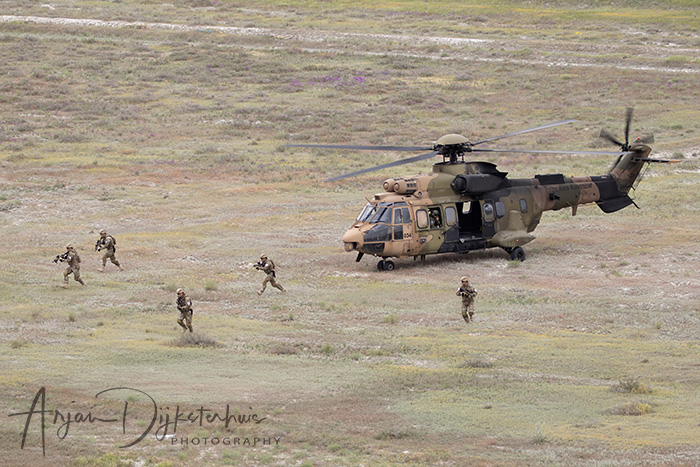
The Turkish Air Force (Türk Hava Kuvvleteri) hosted the international exercise Anatolian Phoenix at their 3rd Main Jet Base in Konya, Turkey and was held between the 13th and the 24th of May. The city of Konya is located in the South-West part of central Turkey. Turkey, the Turkey Republic of Northern Cyprus, Azerbaijan, Pakistan, Romania, Qatar and the United Kingdom participated in the exercise.
Exercise Anatolian Phoenix is held twice a year since 2008, five of these were international exercises. Important exercise objectives are; to experience possible ground assisted Joint Task Force (JTF) missions in a similar operational environment with realistic scenarios to create feedback to the teams for improvements of their tactics. To try and evaluate the Joint Task Force C2 and communication system effectiveness and train the participants, and to identify faults in the system and develop solutions for that. Sharing experience and tactics between the several assets. Development of the interoperability and strengthen the military relationships. To execute bi/unilateral training missions such as formation flights and tactical navigation. Several mission types are included in the training to increase combat readiness: Close Air Support (CAS), Time Sensitive Targeting (TST), Combat Search and Rescue (CSAR), Ground Assisted Air Interdiction (GAAI), Point Defence, Hostage Rescue, Casualty Evacuation (CASEVAC) and Infiltration/Exfiltration missions.
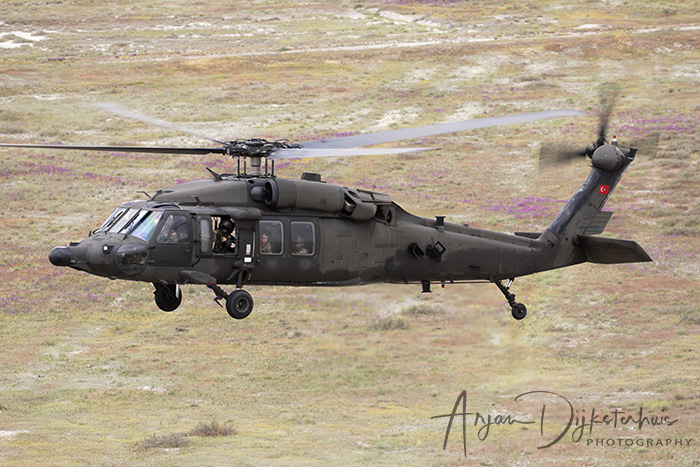
Anatolian Phoenix 2019-1
About 430 personnel and twenty-five helicopters and fixed wing aircraft gathered at the air base at the beginning of this two weeks during exercise. Host nation Turkey participated with several aircraft and helicopters and a single UAV. Locally based units participated with one Boeing E-7T AWACS (Early Warning and Control System) operated by 131 Filo, four F-16’s from 132 Filo and three AS532 Cougar helicopters operated by 135 Filo. The Türk Kara Kuvvleteri (Turkish Army) participated with two types of helicopters, a pair of T129B ATAK helicopters and multiple Cougar helicopters. The Turkish Special Forces Command (Özel Kuvvetler Komutanliği) participated with one of their Ankara based S-70 Blackhawks. One Cougar from the Turkish Republic of North Cyprus Security Forces Command, based in North Cyprus, took part in the exercise as well.
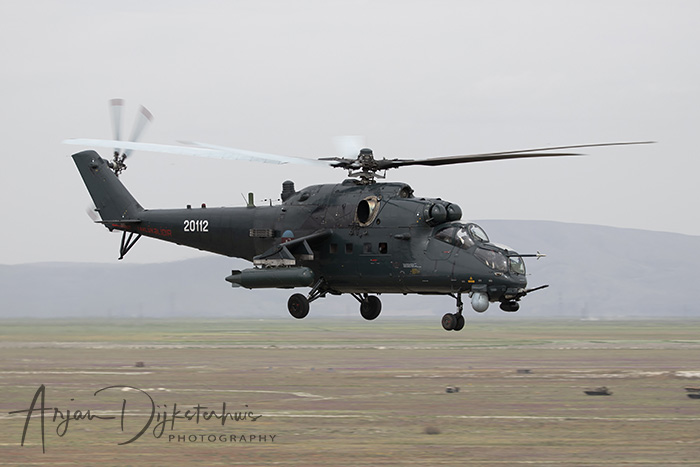
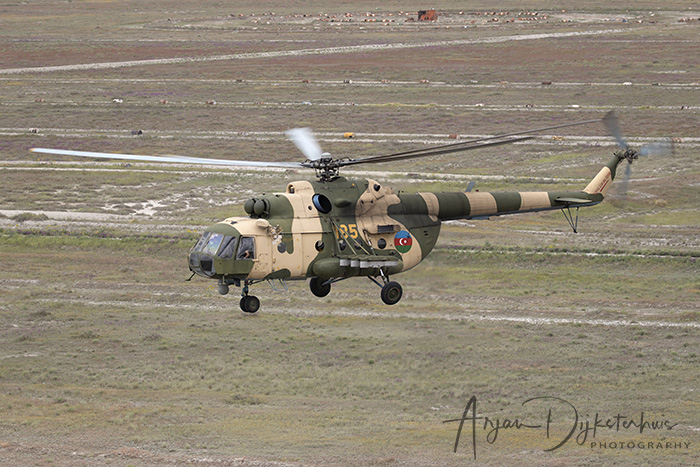
The Azerbaijan Air Force took part in the exercise with a total of four helicopters; Two Mi-17-1V and a pair of Mi-35M helicopters arrived from their home base Qala Air Base in Azerbaijan. 713 Squadron from the Romanian Air Force participated with a pair of IAR-330L SOCAT helicopters from Câmpia Turzii Air Base. While the Qatar Emiri Air Force used one of their C-130J-30 Hercules transport aircraft during the exercise. The Pakistan Air Force were represented by F-16s from 9 Squadron ‘Griffins’.
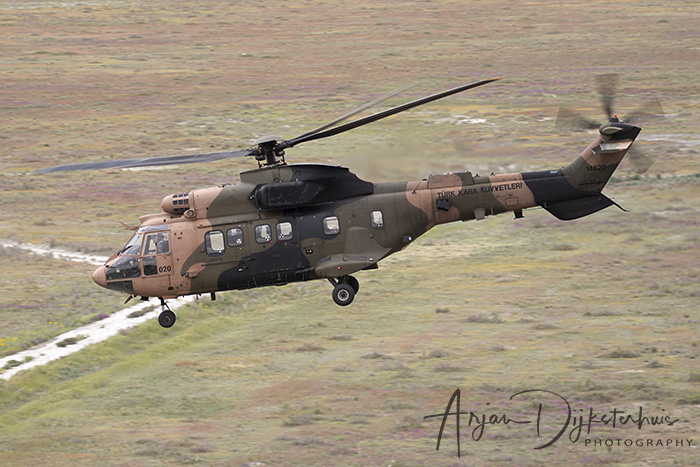
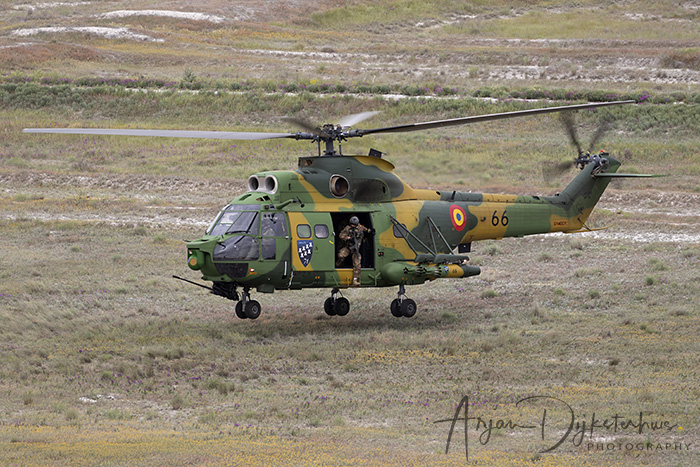
The United Kingdom did not bring one of their helicopters but joined with an JTAC-team instead. Other countries did send different teams to take part in the exercise, for example, CSAR and observer teams. This included a team from the Turkish Navy (Türk Deniz Kuvvetleri) and a unit from the Turkish Special Operation Forces. The exercise included night flying missions and a variety of locations were used during the exercise, depending on the scenario that day.
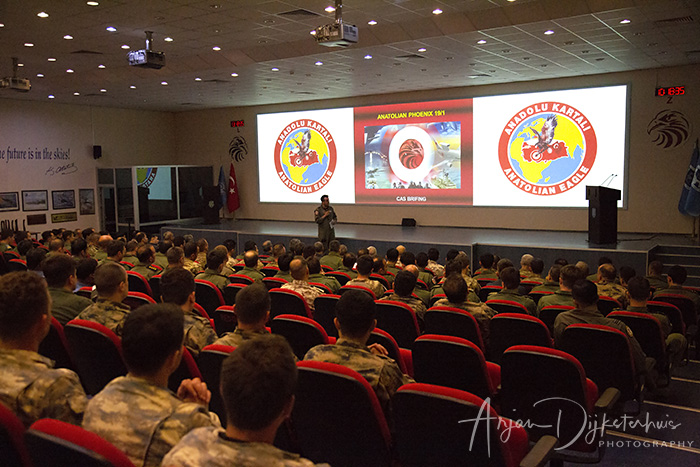
The air base of Konya is well situated for exercises like this. The Konya range is in the vicinity, located just a few minutes flying from the south-east of the city. Mountain flying can be practiced on multiple places around the air base. A large lake near the city of Beyşehir is often used for Search and Rescue (SAR) training, but not during this edition of Anatolian Phoenix.
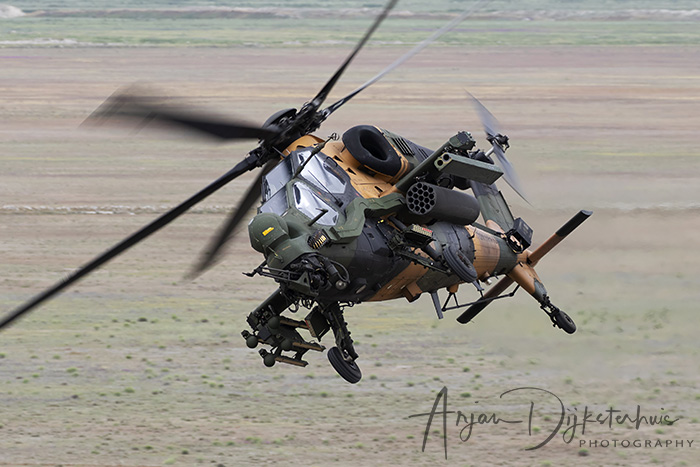
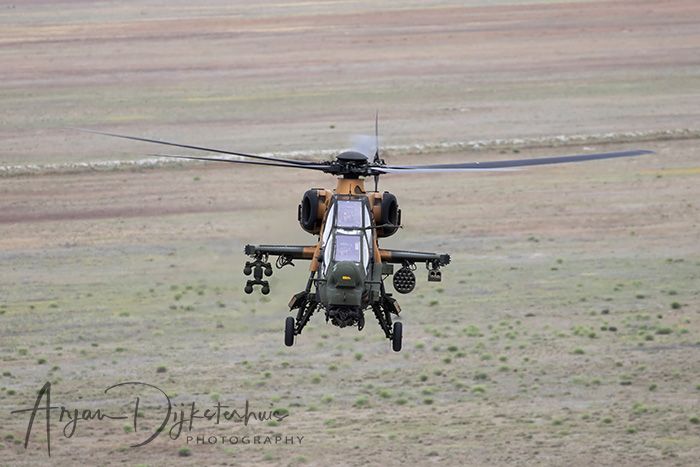
Aviation-photos.nl closely witnessed some of the operations in a simulated scenario. According to a last Intel report, a group of BTG members (Black Terrorist group) could attack an outpost of the Blue Forces. In this scenario, the Joint Task Force was ordered to defend the outpost. Missions had to be planned and included several phases. HALO, CAS, CASEVAC and CSAR. The ANKA, a Medium Altitude Long Endurance (MALE) UAV was used for the first time during an Anatolian Phoenix exercise. The UAV with callsign ‘THUNDER-1’ was already in the air collecting intelligence for the Joint Task Force. A Joint Terminal Attack Controller (JTAC) team infiltrated by parachute while using the HALO (High Altitude-Low Opening) technique. ‘FANAT-1’, a Mi-17V-1 from the Azerbaijan Air Force delivered the JTAC team on the scene. The surface to air threat from the terrorist group had to be neutralized first and therefore Close Air Support (CAS) was needed. The JTAC-ers talked ‘HANCER-1’ and ‘HANCER-2’ to their targets and the F-16s dropped GBU-34 and Mk82 bombs on the targets before ‘BARUT-1’and ‘BARUT-2’ arrived on the scene. The T-129B attack helicopters came in from the east while flying low to stay unnoticed before making multiple strafing runs while using their 20 mm cannons. A few casualties had to be evacuated and three helicopters arrived on the scene for as the third part of the mission: CASEVAC (Casualty Evacuation). Three low flying helicopters flew in ‘DUMAN-1’, a S-70A from the Turkish Special Forces, together with an Turkish Army AS.532 Cougar as ‘DUMAN-2’ and shortly followed by an Azerbaijani Mi-17V-1 as ‘DUMAN-3’. The special forces used fast-ropes and the hoists while extracting the wounded. The casualties were quickly winched into the helicopters afterwards. Both the T-129B ATAK helicopters stayed in the area to provide Close Air Support. The Joint Task Force suddenly had to deal with a new situation…’Fantom-1’, one of the Blue Forces crashed during the evacuation and the pilot successfully ejected but was now an ISOP (ISOlated Personnel) and had to be rescued during a CSAR (Combat Search and Rescue) mission. The International Joint Task Force quickly followed a fifteen line briefing. This includes the number of persons that it concerns, the location and the condition of the ISOP (e.g. wounded/critical or dead). But also known enemy threats are taken into account. The ingress and egress routes were planned and the mission had to be executed as quickly as possible. The intent was to establish air superiority and to execute the CSAR mission with a safe recovery of the crashed aircrew. Engagements were not allowed and had to be avoided. The CSAR Task Force was escorted by two pairs of Pakistan air Force F-16s that flew in an overhead pattern at two different altitudes. ‘Thunder-1’was still airborne and provided a continuous flow of information to the attack helicopters. An enemy convoy was spotted and Turkish F-16’s again dropped live bombs in multiple passes. ‘BARUT 1 and 2’, the T-129 ATAK helicopters, provided Close Air Support and engaged the convoy while using their onboard cannons. ‘HIZR-1’, a TRNC AS.532UL Cougar arrived on the scene accompanied by two Romanian IAR-330 acting as ‘HIZIR-2 and ‘HIZIR-3’ to pick up the downed aircrew. Both the Mi-35M ‘Hind’ attack helicopters from the Azerbaijan Air Force provided Close Air support as well as ‘BARUT-3’ and ‘BARUT-4’, making it an international Task force.
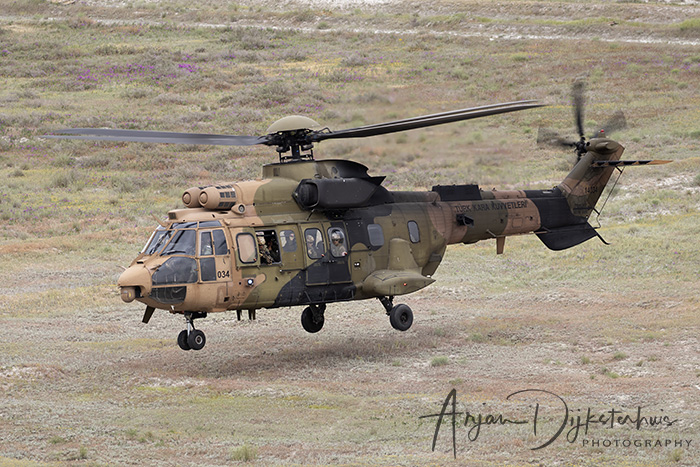
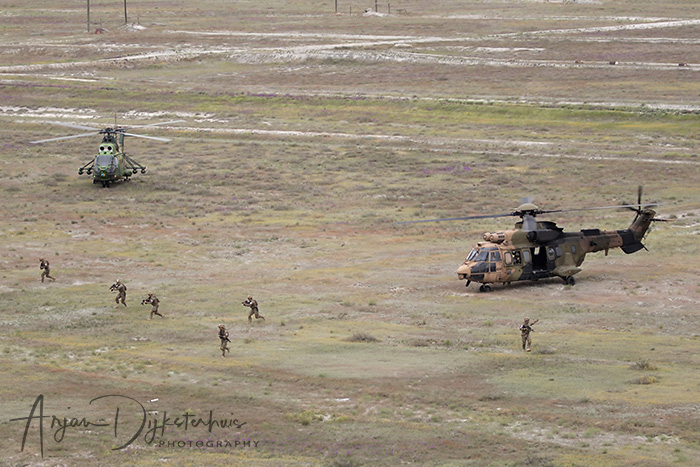
“Train as you fight!” has been painted on the wall in the main briefing room, but participating aircrew were reminded during the briefing that Anatolian Phoenix is a training, not a war. One of the pilots is an experienced pilot, but the Captain recently switched from fixed wing to flying the Cougar. As he described “Being a pilot is how to use a helicopter for flying. Being a SAR (Search and Rescue) pilot is how to save lives by using the helicopter, and becoming a CSAR pilot is learning how to do SAR by not being hit and save that person alive. In a regular SAR mission the sole objective is to find the survivor(s) and bring the survivor(s) to the closest medical care centre. But in CSAR missions, the survivor is in a threat zone, where you can be detected visually or by radar, while being exposed to SAM’s (Surface-to-Air Missile), MANPADS (Man-Portable Air-Defence Systems, like the SA-7 Grail or the SA-16 Gimlet) and last but not least the terrain itself. You have to change your flight rules while you are in the threat zone”. The Captain continues “First you have to fly low, really low, like max fifty feet AGL, to hide yourself from radar and visual detection. Also, you have to fly fast for not being detected longer than a missile lock time. At the same time you have to locate the survivor at that velocity. Once you found the survivor, you do not have much time to evacuate. You do not want to stay in that area too long to get shot by ground units. The potential dangers of flying low and fast are electric wires, antennas, buildings and trees that can be hit are all around. Communication with the ground units is barely done because of the antenna sight problems. If you have an engine problem at high altitude area like the Anatolian Eagle training areas (with a minimum of 5000 feet MSL) while flying fifty feet AGL, you probably will not have enough performance to go around and return to base with the fuel and crew load. If possible, you have to land within the threat zone or end up in the forest”.
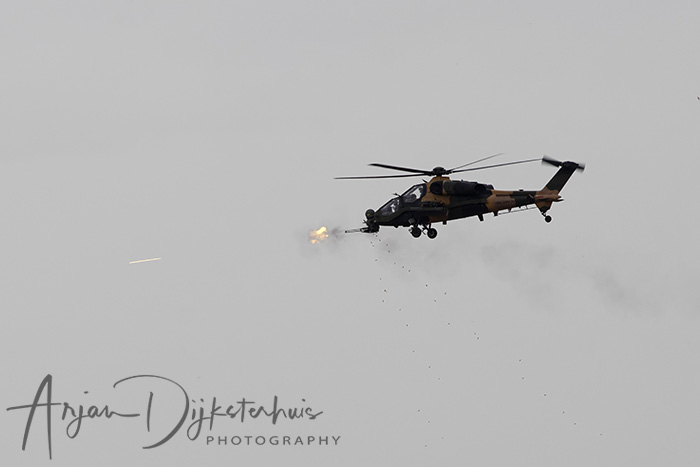
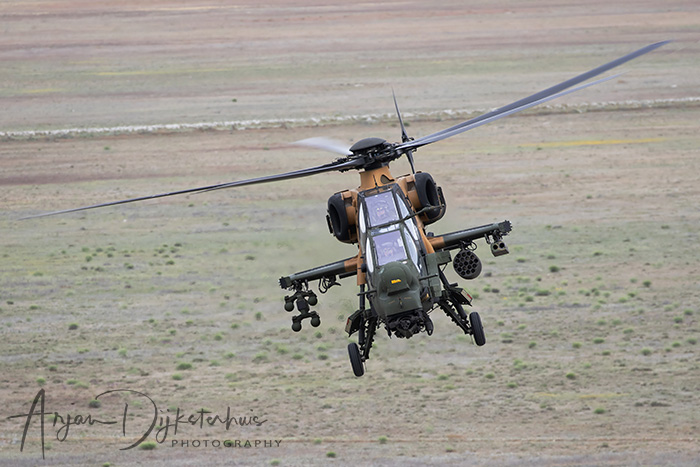
One of the participating pilots described some days were like hell, but nevertheless the learning curve was steep. Lessons were learned; you have to take so much risks to save that individual. You have to know your helicopter performance and limits, and calculate fuel load, crew and time precisely for accomplishing the missions. And, communication is essential. Especially while working together on an international level. English is the standard language in aviation, but that does not mean that the other crews are used to speak English.

